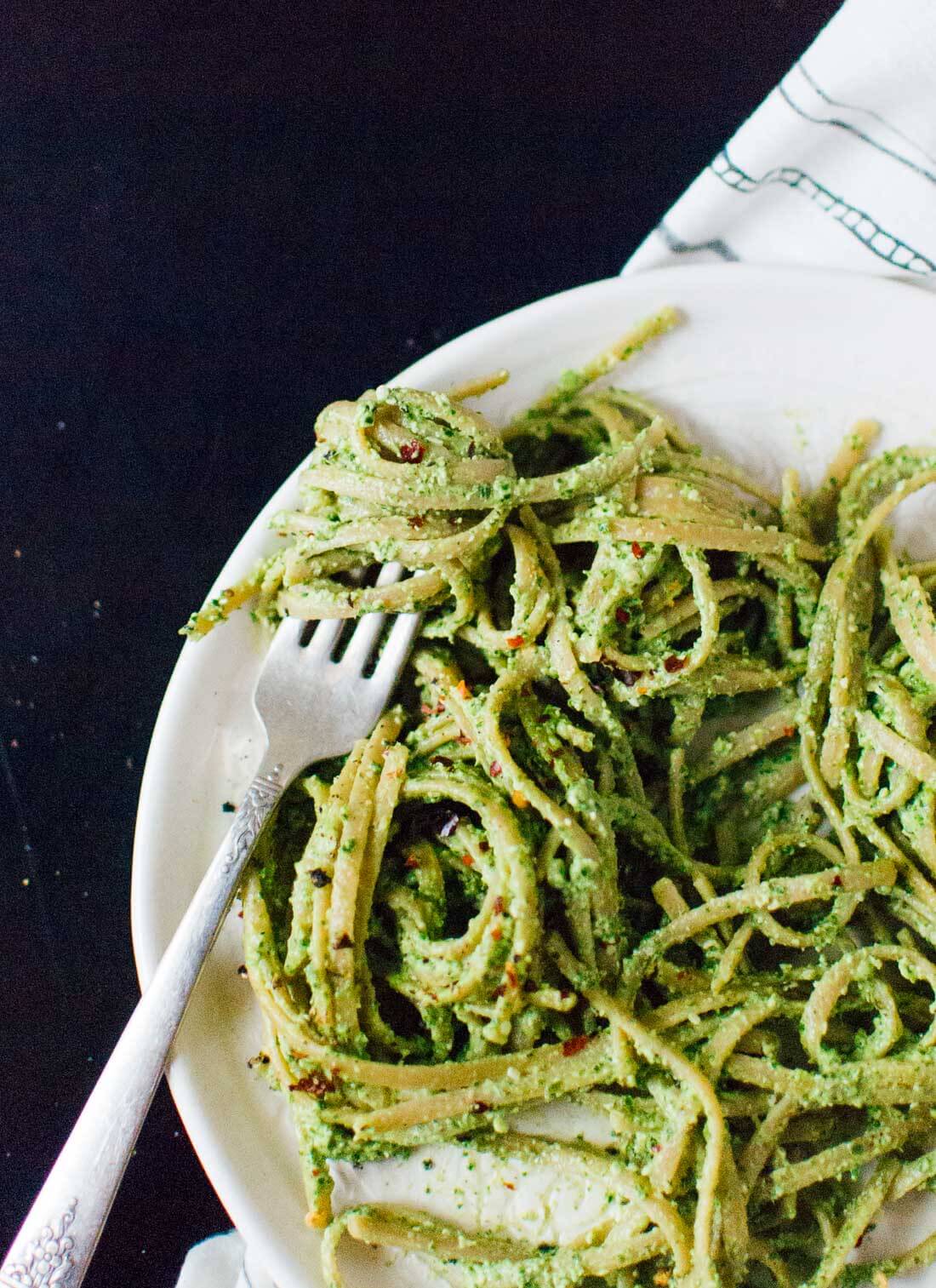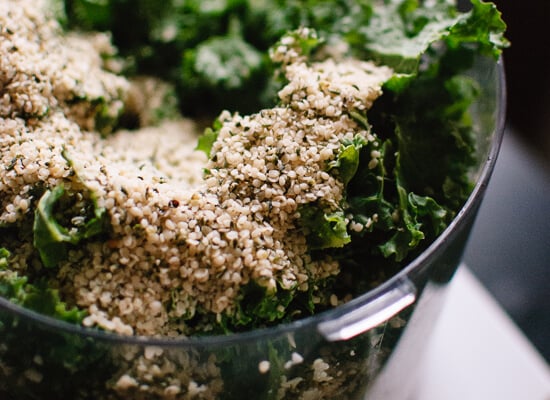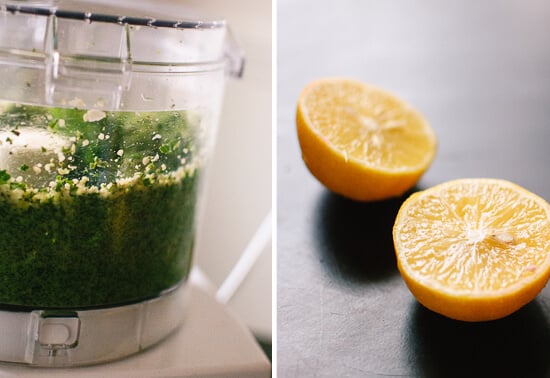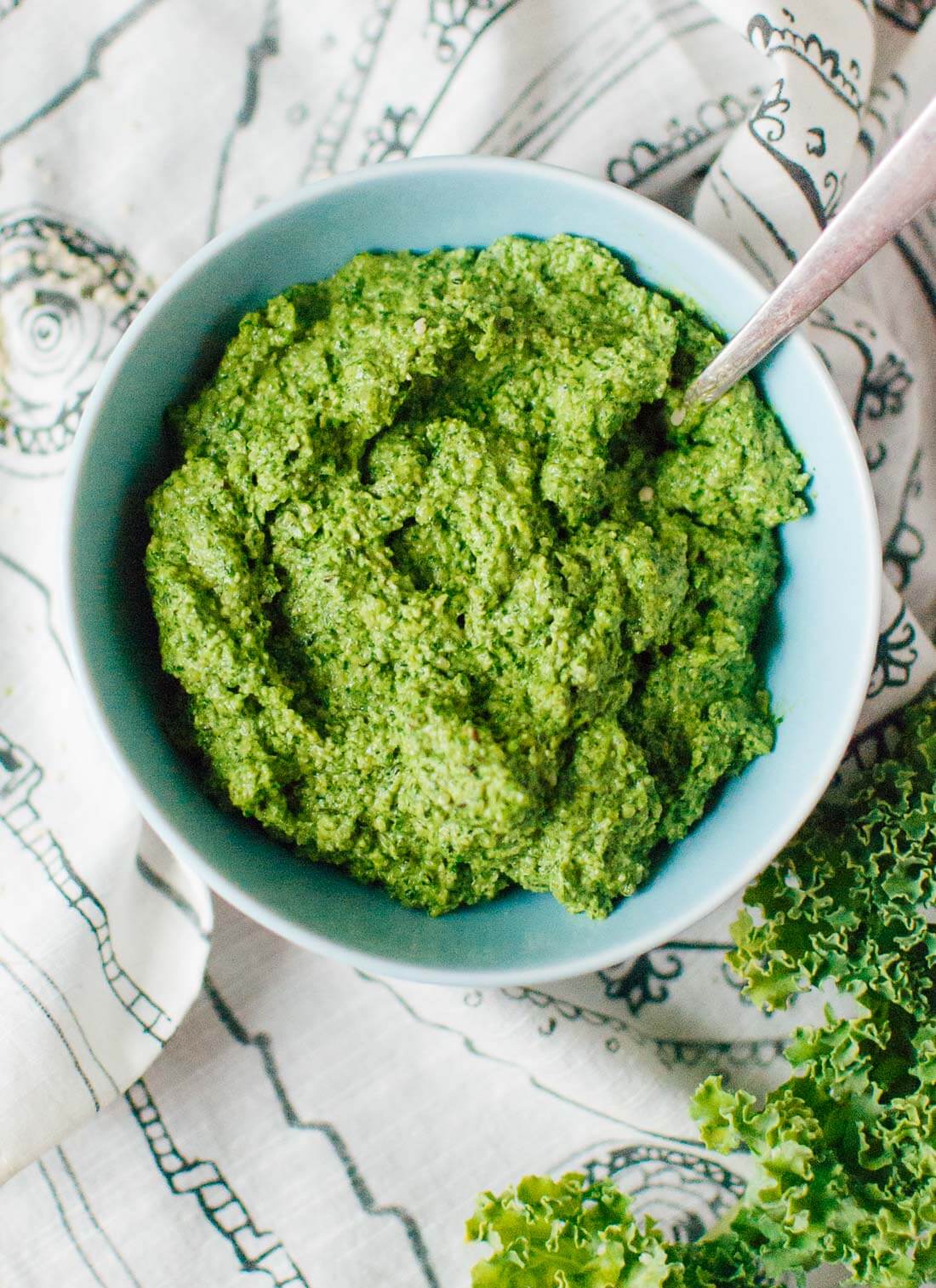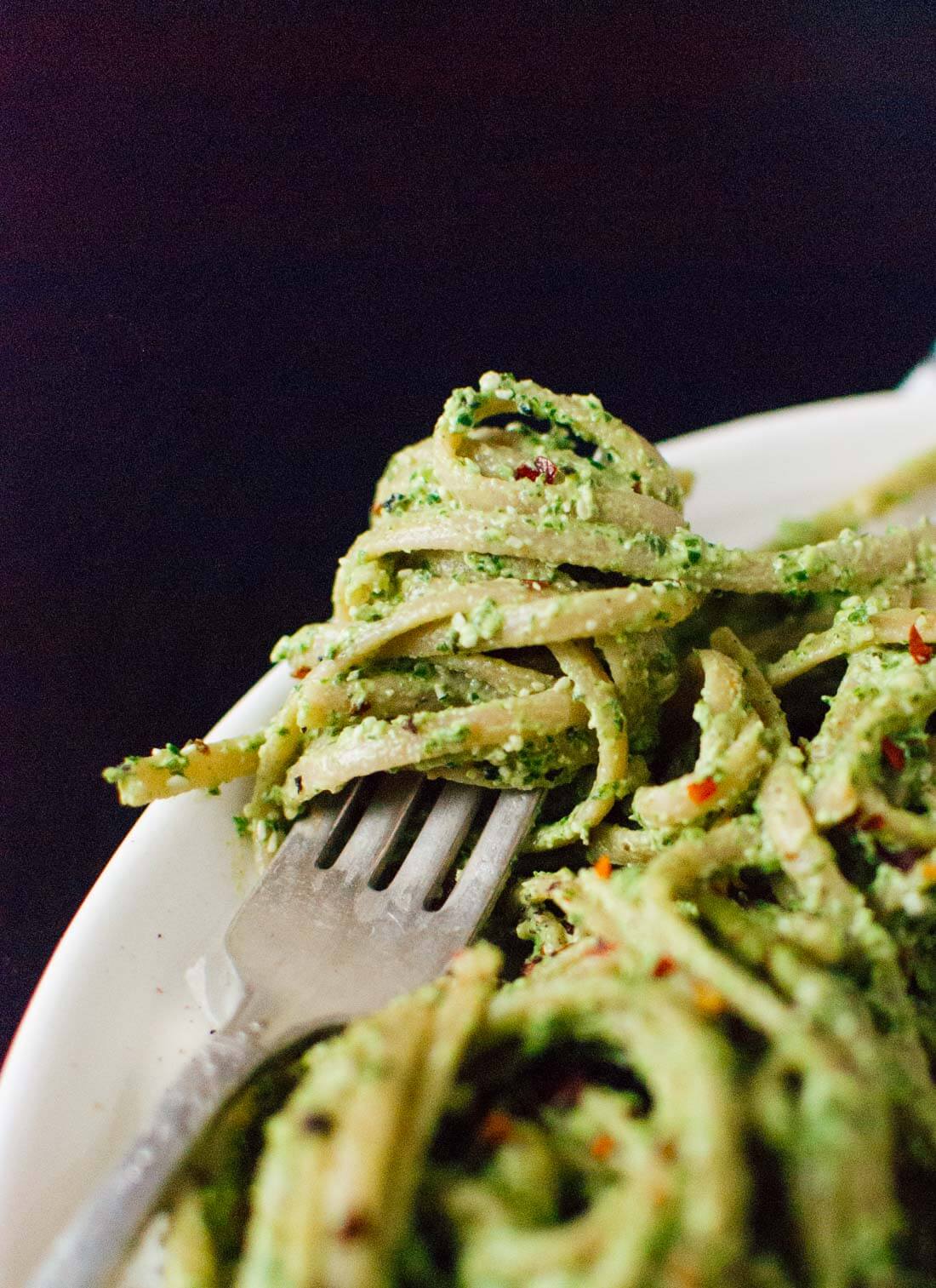When asked what I do for a living, my response lately has been, “I’m a food blogger,” which is usually met with an eyebrow raise. “What kind of food?” they ask. I explain that I publish tasty recipes that just so happen to be healthy. (I probably need a better elevator pitch.) I stand by my statement with this pesto. Yes, it’s packed with so-called super foods, but it’s also mighty tasty and ready in under 10 minutes.
Hemp seeds are new to me. I’d come across them in health magazines and vegan blogs before, so I knew they’re high in protein and full of essential amino acids. I’m not the kind of person who takes wheat grass shots just because they’re healthy, though. I wasn’t interested in hemp seeds until I read in Martha Steward Living that they actually taste good. Like pine nuts, sorta. Sold!
I found a bag of hemp seeds in the supplement aisle of Whole Foods for 10 bucks, reminded myself that they’re still cheaper than pine nuts and tossed the bag in my cart. At home, in a post-shopping fit of hunger, I whirred together garlic, kale and hemp seeds in my food processor. I reheated some leftover pasta from the fridge. About 10 minutes after I got started, I was enjoying a super nutrient-dense dinner. I must have polished off at least 1/3 cup of hemp seeds and half a bunch of kale in one sitting. I’m expecting my Popeye muscles any day now. Later, it occurred to me that I could use flaxseed oil instead of olive oil in the pesto. I had a forgotten bottle of flaxseed oil in my fridge. Flaxseed oil is a bit limited in cooking preparations, since it should only be served chilled or at room temperature. To retain nutritional benefits, both flaxseeds and hemp seeds should be kept in the refrigerator and never cooked. The flaxseed oil significantly ups the amount of omega-3’s in the pesto. I couldn’t detect the flavor of flax in the pesto, which was a big plus. The oil has made a few of my salad dressings taste overwhelmingly flax-y. The hemp seeds disappear into the pesto, too, leaving a pleasantly nutty flavor and some creaminess.
If you don’t have hemp seeds and flaxseed oil on hand, you can totally make this into a kale, walnut and olive oil pesto. That version will be very good for you, too. I’ve been trying to incorporate more inflammation-reducing omega-3’s in my diet (my dry skin needs all the help it can get), so I’m excited to have found a delicious way to get them. You can learn more about those omega-3’s here. This pesto is not just for pasta. In fact, I might prefer it as a full-flavored dip or spread rather than on pasta. You could spread it on sandwiches or wraps and mix it into quinoa or grain salads. I’m also thinking it would be great with wild rice and roasted carrots. Or potatoes. On toast, with or without a fried egg on top. Speaking of eggs, you could mix this pesto into scrambled eggs or serve it on top of a frittata. If you are serving the pesto on pasta, you could lighten up the meal by adding more produce. In the summer, you could mix in zucchini noodles and/or grilled bell peppers and/or slow-roasted tomatoes. Sautéed mushrooms or chunks of roasted winter squash would be nice in the cooler months. Let me know how you like it!
Suggestions for leftovers: If you intend to have leftover pasta, it’s best to store the noodles and pesto separately. Avoid reheating pesto (it will lose its vibrance and some of its flavor)—especially if you used flaxseed oil, which is heat sensitive. To serve, bring the pesto to room temperature and add a little water if necessary to get the right consistency. Make it vegan: This pesto is vegan as long as you skip the Parmesan. Make it gluten-free: This pesto is gluten-free; just be sure to serve it on gluten-free pasta or whatever else. Make it nut-free: Use hemp seeds instead of walnuts or pecans. Recommended equipment: If you’re in the market for a food processor, I love this small, highly rated Cuisinart food processor (affiliate link).

